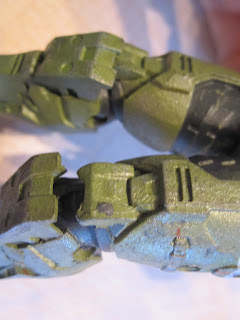Album Title: Video Games Live Volume 1
Composer/Band/Performers: Slovak National Symphony Orchestra & miscellaneous
Released: 22/07/2008
Final Verdict: 7.5/10
So I've had this written up for about a month, but was too lazy too make a header. So here it is!
So like the tech savvy tool that I am, I decided to finally sync my iPod to my laptop. I hadn't ever synced my iPod before (because I never really had a SINGLE computer that I always had access to), and my entire library of music was picked up from friends along the way. iTunes gives me a prompt and is like "Yo man, is this your home base?" so I'm like "Yeah" and then it's like "Your shit is way outta date, let's update this mofo" I'm like, sounds about right, okay. Next thing you know my iPod had been wiped clean and I was raging. iTunes was all "But you told me this was your home, so your library should be here to reload anyways, right?" and so I lost all my music.
Damn.
Next thing I know I'm out shopping a bit. Hit up HMV which now has a smaller assortment of CDs then vinyls and movies, because really, who buys CDs anymore? Being desperate for music, I picked up a few CDs, including this one, Video Games Live Vol 1. I had seen a show about 2 years back now in Ottawa, and I really enjoyed it and really it's not like I need a real excuse to buy video game junk anyways.
For those of you who don't know who Video Games Live are, I'll kindly provide you with a Wikipedia link so you can read up on what you're missing because I don't want this review to turn into a class on video game culture.
So now that my life story is over, let's start with a peek at the setlist:
- Kingdom Hearts
- Warcraft Suite
- Myst Medley
- Medal of Honor (Live)
- Civilization IV Medley
- Medley: Tetris
- God of War Montage (Live)
- Advent Rising Suite
- Tron Montage
- Halo Suite
- Castlevania (Live)
Moving on: let's take a look at the variety and quality of the set list here. I'm not really surprised by World of Warcraft's, Tetris' and Halo's presence, but I am a touch surprised to find Advent Rising in my 2 compilations out of 2. The balance of game types represented is pretty balanced, as are their music genres from the more gothic rock Castlevania to the upbeat soviet Tetris and the digital blips of Tron. The mix is good and fairly balanced, though I can't say personally that I'm completely blown away by any.
A variety I was NOT looking for however is the recordings. We have studio and live recordings mixed, and even, in the case of Advent Rising, an original track re-edit (not quite sure the implications of that one, but y'know! I thought it was worth mentioning). I'm not a fan of Live recordings myself, though I have to admit in this case the quality is fairly good and the only real alien noise is quiet, polite clapping at the end of the song. However, in Castlevania, Jack Wall (as I've seen other people mention he's the one you hear, though I wholeheartedly believe it is Tony Tallarico from my personal experience) screams out an introduction that I think only really bothers me in the universe because he annoyed me with his conceit when I saw him live, so you can disregard my opinion about that as soon as you've read it in this big run-on sentence.
A clip from the Blu-Ray of Video Games Live vol 2. Civilization IV Medley.
My favorite interpretation would have to be the Civilization IV Medley. The song is a mix of multiple cultures, the rhythm is so upbeat, the chorus beautiful and the soloists absolutely lovely. It's really encouraging to see how video games can go digging into much more then just it's own culture to reach a new level of depth and not to mention making gamers explore that culture as they are experiencing it.
Anyways, I seem to have ragged on this CD a lot more then I have praised it, yet it's not getting a bad rating at all. It's not unpleasant in any way. It's got a good mix of music from a nice variety of games, and the musicians are unquestionably talented. My gripe is that The Greatest Video Game Music did it better. The sound was more complete, more intense. The recordings were crisper with more boom. I guess this one just fell a little short for me, despite it being a great source of great music (from not such a great price I admit). I'm giving it 7.5 blips out of 10 for just not spending the time to polish it. I need more songs, more consistency in the recordings, and hell, if you're holding back to make more volume, THEN MAKE MORE VOLUMES.
Anyways, I'm going to go back to trying to make this site look like something. Peace!



























